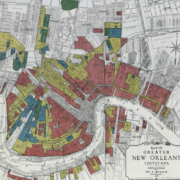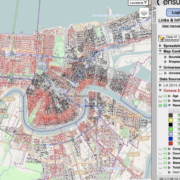Affordable Housing
Affordable housing is increasingly hard to come by—especially for young people just starting out in life and those facing disproportionate barriers due to the income disparity divide. Today, rising rents and stagnant or declining wages are obliging more people to spend a large portion of their income on housing, putting increasing numbers of people at risk of experiencing homelessness.
Zillow Research published a 2018 study of housing affordability and homelessness in the United States and found that communities where residents spend more than a third of their income on rent can expect to see a more rapid increase in homelessness.
In fact, the study says, “The areas that are most vulnerable to rising rents, unaffordability and poverty hold 15% of the U.S. population and 47% of people experiencing homelessness.”
Severe housing cost burdens can increase one’s risk of experiencing homelessness. According to the most recent “State of Homelessness” report by the National Alliance to End Homelessness, 6.3 million U.S. households spent more than 50% of their income on rent and 3.7 million poor households “doubled up” (i.e., lived with family and friends) in 2019.
Since the 1990s, governments in both the U.S. and Canada have invested less and less in affordable housing and abandoned robust housing policies that would lift some of the burden from struggling families. As a result, when the Covid-19 pandemic started, advocacy groups rushed to secure housing stability and rental assistance for thousands of people left to navigate the challenges of the pandemic with little governmental support.
Young people who leave or are removed from their family homes face enormous housing challenges. Those who age out of foster care are often left without guidance or support and are “thrown into the deep end” of the adult swimming pool, expected to arrange stable, affordable housing from one day to the next. However, many of them lack a high school diploma and are ill-prepared to find and hold a job that can cover their housing and related expenses.
The U.S. Administration for Children and Families says that by age 21, at least 26% of young people who aged out of foster care in the U.S. experienced a period or more of homelessness. The U.S. Department of Housing and Urban Development puts that figure at 11 to 37%, with another 25 to 50% unstably housed.
Covenant House helps youth develop the tools and skills they need to sustain their independence, providing comprehensive financial literacy programs that help them take their first steps toward obtaining a bank account and building credit. We help young people fill in their education, life skills, and job readiness gaps, and support them in processing the trauma of their past homelessness. In all these ways, Covenant House helps prepare young people to pay rent, sustain their housing, and become independent.
In addition, Covenant House provides family reunification and follow-up services whenever it is safe and in the best interest of the young person to return to their family of origin.
Fair Housing in the US
Fair housing refers to the ability for all individuals to choose their housing based on the criteria that they choose to prioritize, regardless of their identity, history, or creed. When prejudices or policies block this freedom for choice, the individual’s right to fair housing has been violated.
The history of fair housing in the United States is multifaceted. Historically, a visible and tangible form of housing discrimination is in the form of redlining. Generally, redlining is the systematic denial of various services or goods by governments or the private sector either directly or through the selective raising of prices. Prior to the Fair Housing Act of 1968, redlining was utilized in the housing industry by mortgage companies to suppress minority populations from receiving home loans to buy homes in other neighborhoods as well as to deny them the funds to improve their current homes.
The Fair Housing Act of 1968 is the key legislation regulating fair housing and discriminatory housing practices in the United States. This act prohibits discrimination in housing allocation, services, or any other practices on the basis of race, color, national origin, religion, sex, familial status, or disability. This federal law covers the entire US, and then individual states, counties, and cities have made their own additions to the list of included protected identifiers.
Other federal regulations of fair housing work to clarify the identifiers included in the Fair Housing Act and the implementation of their protection. According to the US HUD, compounding the Fair Housing Act “A variety of other federal civil rights laws, including Title VI of the Civil Rights Act, Section 504 of the Rehabilitation Act, and the Americans with Disabilities Act, prohibit discrimination in housing and community development programs and activities, particularly those that are assisted with HUD funding. ” These laws ensure that people with limited English proficiency and those with disabilities are effectively communicated with to ensure their needs are met and that they have access to all relevant programming.
Fair Housing in New Orleans
Redlining in New Orleans
Though redlining was outlawed by the Fair Housing Act of 1968, its effects are still seen in New Orleans today. The below map shows the redlining done in New Orleans in the 1930s, with Lakefront and City Park neighborhoods in green, while Central City, downtown and Garden District neighborhoods are red. These areas were then primed for gentrification, especially facing the after effects of Katrina.
Analyzing the 2010 census of New Orleans below, the effects of redlining and unfair housing process in the city’s history is clear. The effects of this segregated housing practices then cascade into the cycles of poverty that lead to homelessness and human trafficking.
Do your part in advocating for fair housing practices in your community by alerting The Louisiana Fair Housing Action Center if you know of unfair housing practices in the state of Louisiana.
Resources and data
Read the Zillow report, “Homelessness Rises Faster Where Rent Exceeds a Third of Income,” 2018; “State of Homelessness,” National Alliance to End Homelessness, 2019; “Homelessness and Crisis of Affordable Housing: The Abandonment of a Federal Affordable Housing Policy,” by Alfred M. Clark, III, in the Journal of Affordable Housing, vol 25, no. 1, 2016; “Understanding Housing Challenges and Supports for Former Foster Youth,” HUD PD&R Edge, 2016; “The State of Homelessness in Canada 2016,” The Homeless Hub; “Estado de la Vivienda en Centro América” (English summary), CLADCS, INCAE Business School, 2018; “A Tight Spot for the 34 million Mexicans Living in Micro-Apartments,” El Pais, Feb. 9, 2018.
Learn more about fair housing in Louisiana: https://www.lafairhousing.org/25-years
HUD information on fair housing in the US: https://www.hud.gov/program_offices/fair_housing_equal_opp/fair_housing_rights_and_obligations
Redlining in NOLA: https://www.nola.com/gambit/news/article_215014ce-0c15-5917-b773-8d1d2fdaa655.html
How you can help
For more information please contact volunteernola@covenanthouse.org.





